
Hanmer Springs: a weekend escape
A short getaway at Hanmer Springs includes relaxation, indulgence and a touch of adrenaline.
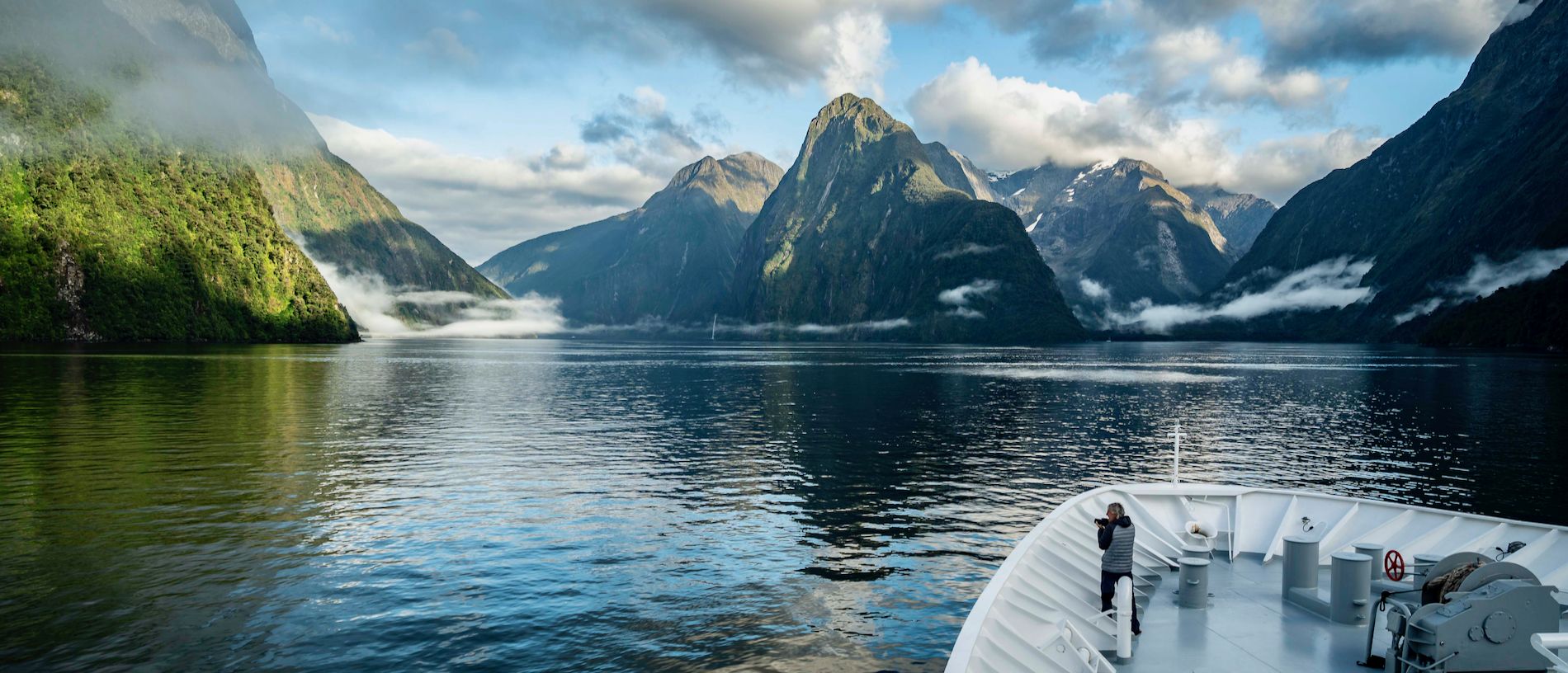
Before leaping into icy water, take a deep breath. The cold shock can cause a sharp, involuntary intake of air which, if you’re underwater, is problematic. I’m told this as I wait for my turn to take a polar plunge.
Earlier that day, the first day of the year, I was on the uppermost deck of Heritage Adventurer, holding my breath but not in relation to survival techniques; I was in awe. We had glided deep into the sheltered Carnley Harbour on the Auckland Islands and the serenity was absolute. Apart from a few playful seals, the bay was the epitome of calm and it was powerfully beautiful.
I was among 140 passengers sharing the 124m-long craft. Various open decks, a restaurant and lounge, a bar-style café, a library, a pool and a sauna area meant there was plenty of space – it was never difficult to be alone and there was always something to do. Spending time on the bridge, connecting with other passengers over meals and soaking up insight from guest speaker naturalists, botanists and historians became daily highlights.
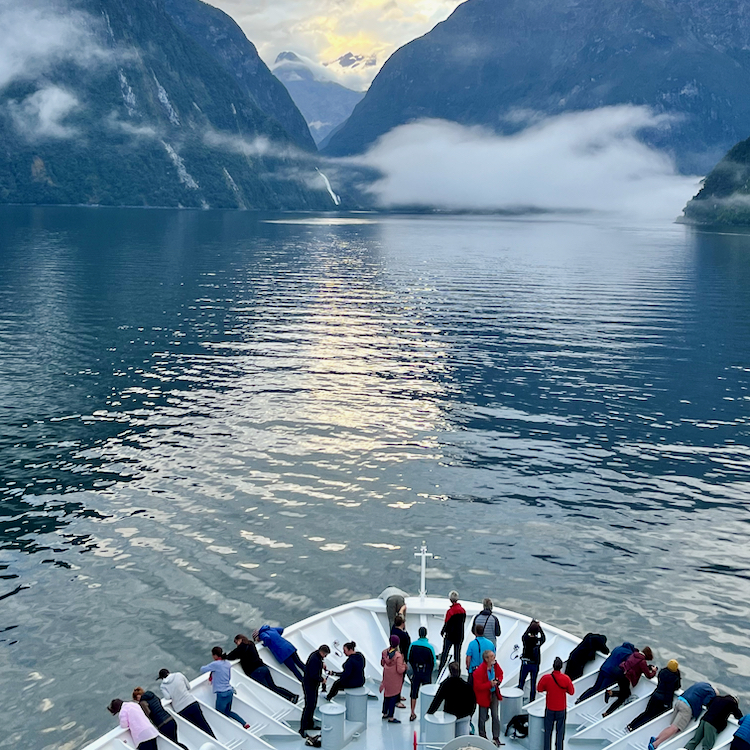
But the topmost observation deck was one of my favourite places to be. Sometimes the bow would rise and drop dramatically and I’d stand with my feet splayed to balance, one hand on my hat.
Such moments with a bit of wild in the weather were thrilling; the big Southern Ocean swell, the roar of the wind, the seascape endless and our sturdy, heroic ship riding through.
Down a couple of levels, the aft deck was where the photographers flocked, their long lenses raised, bracing against the roll, chasing the dancing albatross, careening gulls and shearwaters in an endless game of 'catch the action shot’.
Being anywhere onboard the ship was thrilling, even in our cosy cabin with its slightly vintage vibe and clever design, providing a place for everything. But most days involved at least one excursion off the ship. For these, biosecurity was a big deal. Before landing anywhere we had our gear inspected and when we came back onboard it was straight to the mud room to clean boots and brush grass seeds out of backpack pockets. This ritual spoke to how delicate and special the environments we were visiting were and reminded us that we were responsible for keeping them safe.
Conservation is at the heart of Heritage Expeditions. At every opportunity we learned about mistakes made and efforts to rectify them. Campbell Island, for example, had been farmed in the past and many decades later the damage is still being managed, with pest eradication an ongoing challenge.
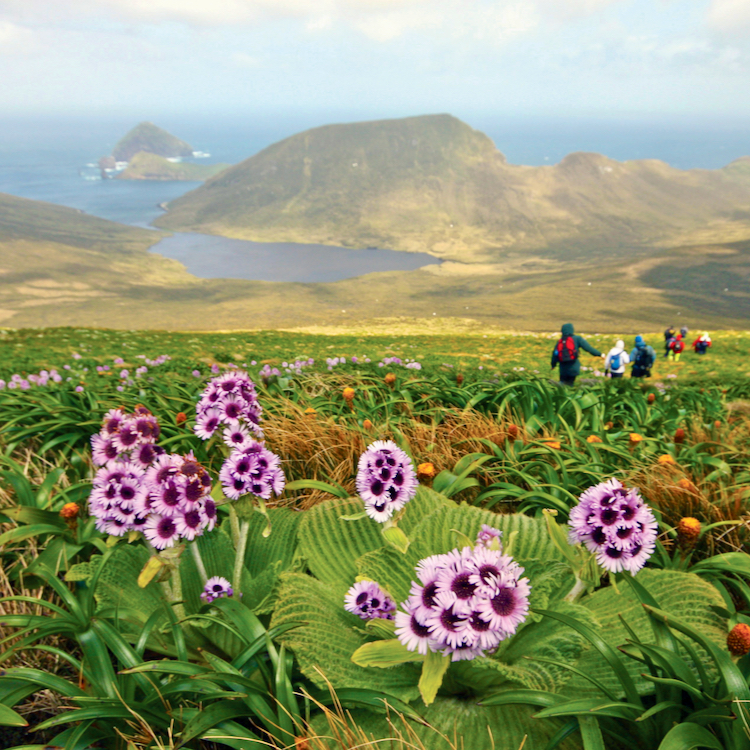
Campbell Island, New Zealand’s southernmost Subantarctic territory, was our first stop, having sailed all night, all day and another night to get there from Bluff. This was the only time on the 12-day journey I felt queasy and I admit I was ready to climb out of an inflatable Zodiac to the low tide of the island for a walk.
There were three options for excursions on the island; I opted for the track to Mt Honey, although several of us curved away before reaching the summit to sit on a ridge to watch Southern Royal albatross. A couple of extraordinary hours were spent watching the great birds land and take off to soar over our heads, tilting in the wind to show their glossy white bellies.
Plant life is strange on Campbell Island. Megaherbs are huge versions of common plants – they’re bold, bright, audacious. Around them, smaller feathery golden plants grew; others shone an almost lurid green. Some pebbly plants with tight formations and tiny flowers peeped through among miniature orchids and daisies, easily missed. Spiky plants, wind-beaten and dense at knee height, created perfect shelter holes for sea lions.
We encountered three bolshy sea lions on the beach. An old, raggedy one just wanted a closer look but we heard the younger two had been challenging the Zodiac that arrived before us. Fortunately, our guides knew about dealing with grumpy animals and dive-bombing skua.
Heading north, we sailed up the eastern coast of Auckland Islands to Port Ross where we explored the site of a Hardwick, a failed British settlement. It was extraordinary to imagine the 200-odd people who came here in the 1850s expecting to find useable land in a hospitable climate. The settlement didn’t last long. Signs of a coastal pathway remain under gnarly, weather-worn rātā. We came across a handful of graves including that of a child whose gravestone was fashioned from a millstone; poignant considering the stone would have been bought from the other side of the world with flour making in mind. No chance. No wheat could grow here. No wheat, no flour, no child.
On the northern edge of Port Ross is pest-free Enderby Island. It was one of the journey highlights, as we spent most of the day here and could wander and explore at our own pace.
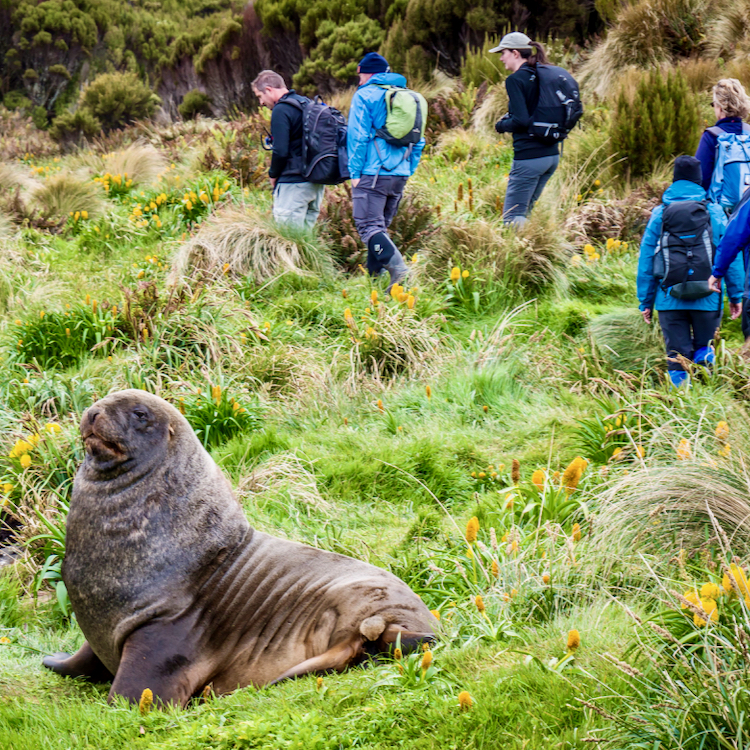
Our Zodiacs beached at Sandy Bay. First, we walked to above the beach to watch – from a safe distance – an alarming New Zealand sea lion performance involving huge, scarred bulls defending their harems with furious displays of toothy violence. Females separated from their sisters were chased into the surf by gangs of young males; pups scurried awkwardly out of the way of their clumsy, hulking fathers.
To protect the vegetation a sturdy boardwalk has been built right across Enderby island, leading us through low, hardy bush then over varied ground cover. Bellbirds, tomtits, pipits, and skylarks flitted about. On the far side of the island we came to dramatic exposed clifftops to look out over the endless ocean and be entertained by seabirds swooping in the wind. Light-mantled sooty albatross flew back and forth to nest in the cliffs; shags, giant petrels and dotterel zig-zagged across the view.
I walked back along the boardwalk alone, a steady wind muting voices, and spied Heritage Adventurer hanging offshore waiting for our return. It was one of many moments I had to pause and absorb, acknowledging how special the experience was. Remember this. Soak it in.
Yellow-eyed penguins stopped me in my tracks. They were returning home after a day’s fishing, trekking up the beach between me and the Zodiac; as instructed, I waited for them to scuttle and hop into the undergrowth before crossing their territory.
Encounters with endangered species were a daily occurrence. We spied rockhopper penguins; the cute ones with feathers sticking up in the eyebrow area, giving them a 'mad professor’ vibe. They shuffled and readied themselves before leaping into the sea with great energy. Elsewhere we saw shag nests tucked onto unlikely ledges, wee chicks showing occasionally.
Once, our Zodiac swung into a cave that had collapsed long ago, creating an atrium of light, the ceiling of sky trimmed with trees towering inward, bird-filled and magical.
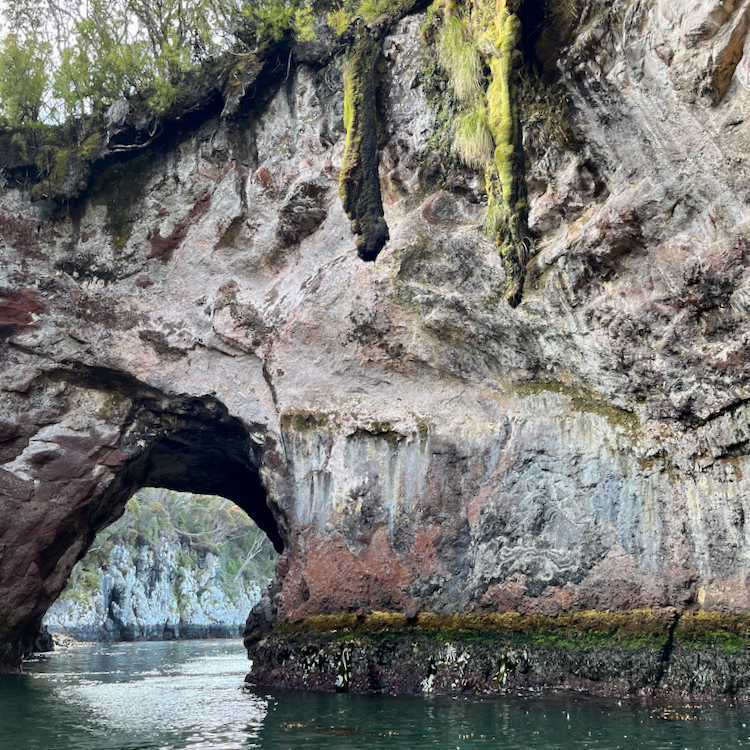
The closest Subantarctic islands to New Zealand are the Snares, called that because of the danger they once posed to sailing ships. Because they have the highest possible protection status, we didn’t land, but the Zodiacs took us close enough to see endemic Snares Crested penguins and fur seals playing in the kelp.
In Patterson Inlet on Stewart Island, the sea was calm, sparkling with morning sun. We were back in the 40 degrees, away from the tempestuous 50s. Here, there was less drama in the ocean, less tension in the line where sky meets sea. Stewart Island felt familiar; we were back in New Zealand.
While the ship restocked, we visited the bird sanctuary on Ulva Island before reacquainting ourselves with shops and roads and noisy human activity.
The final three days of the journey were spent in Fiordland, visiting pockets of the country only accessible by sea. Into Dusky and Doubtful Sounds, excursions delivered us to sites associated with Captain Cook’s 1773 voyage, places reeking of history.
On the second-to-last morning we slid into Milford Sound. It was dawn and the ship’s captain roused us over the PA system. We shifted from sleep to a dreamlike wakefulness to an unreal scene; an eerily calm, glass-like sea, the steep sides of land, waterfalls catching the light, clouds hovering and lifting and settling. Everyone witnessed this in silence.
I realised that anyone who didn’t thrill to early morning dolphin sightings wouldn’t be on board, anyone who didn’t appreciate this special peace. If you’re not someone who gets excited about kelp gardens, megaherbs, penguins, jellyfish, sea lions – you’re not going to join this sort of adventure. We couldn’t get enough presentations or hear enough about the evolution of size-differentiated species, rising sea temperatures, the impact of fishing on native birds, endemic bird species, shipwrecks, heroic rescues at sea, meteorological missions…
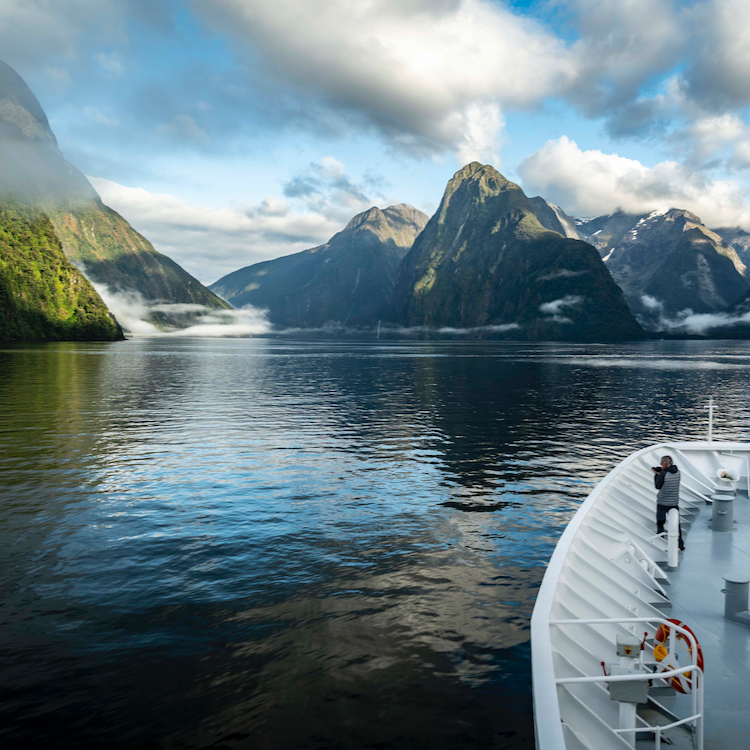
It was heartening to hear from recipients of the True Young Adventurers scholarship who have their travel subsidised, encouraging ambassadors for the cause. And we also appreciated hearing about Heritage Expeditions’ beginnings. Founders Rodney and Shirley Russ made the connection between conservation and science, supporting research in vessels to Antarctica and north to the Pacific and beyond. That was in the 1980s. Their sons Aaron and Nathan run the business now; Aaron was our expedition leader.
He watched us take the polar plunge on New Year’s Day. The togged-up queue snaked out of the hold, past Aaron and down the gangway to a floating dive platform with safety-kitted sailors. The crew held each person steady as they readied to jump, then helped them climb back in, quickly moving them in the direction of someone holding towels. Big smiles all round.
Take a deep breath before you jump! What a brilliant way to start the year.
Story by Kathryn Webster for the Spring 2023 issue of AA Directions Magazine. Kathryn Webster is the Editor of AA Directions Magazine.